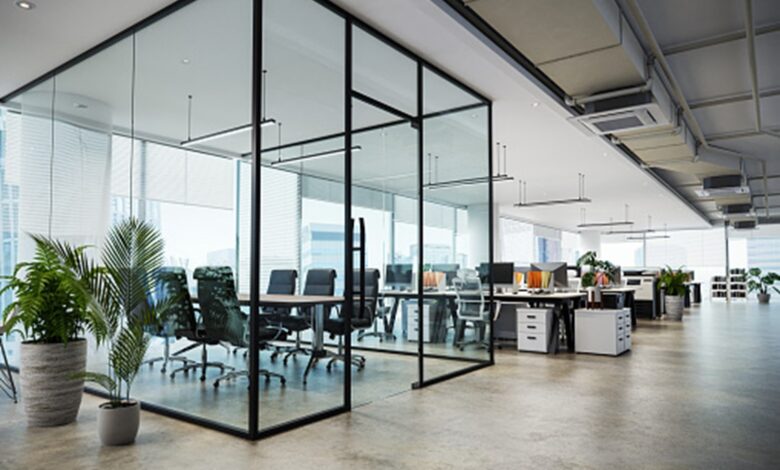
The quest for a more efficient workplace drives organizations to continually explore innovative strategies and technologies. In today’s competitive business environment, companies are always on the lookout for ways to improve efficiency. The goal isn’t just to shave seconds off a task or cut costs; it’s about building an environment where employees can do their best work and feel fulfilled doing it.
Efficiency isn’t solely a number on a dashboard or a box to be checked off; it’s a holistic approach that intertwines with the very fabric of an organization’s culture. With that in mind, let’s explore some tips for enhancing workplace efficiency and how you can measure it effectively.
1. Prioritize Effective Communication
A lack of clear communication can be a significant roadblock in any work environment. Misunderstandings can lead to mistakes, which can become time-consuming to correct. On the other hand, effective communication can lead to smoother workflows and a more positive workplace atmosphere. Encourage your team to communicate clearly, both in person and digitally. Use tools that enable seamless communication, like chat applications or project management software, to ensure that everyone is on the same page.
If you’re a leader, make it a point to communicate your expectations clearly and encourage team members to speak up and ask questions. In a healthy work environment, nobody should feel hesitant to voice their thoughts or seek clarification. Investing time and effort into communication pays off by avoiding missteps and delays, thereby boosting efficiency.
2. Embrace Technology Wisely to Optimize Workflows
Technology is a double-edged sword. On the one hand, it can automate repetitive tasks, making operations faster and more consistent. On the other hand, it can become a distraction or even a hindrance if not implemented wisely.
You don’t want your team to spend more time maintaining the technology than doing the work it was supposed to simplify.
Before introducing new software or hardware into your workflow, do a comprehensive assessment because managing multiple applications and ensuring they are synced properly is challenging.
SquaredUp offers a handy solution that eliminates blind spots and data silos, especially if you’re running an engineering firm. A single platform that allows you to manage all business productivity applications helps reduce duplication without integration headaches.
3. Foster a Culture of Continuous Learning
One of the most potent ways to improve efficiency is by investing in the skill sets of your employees. This doesn’t always mean sending them off to expensive training programs; sometimes, small, in-house workshops can be equally practical. Encourage employees to share their expertise with one another and foster a culture where learning is valued.
Continuous learning helps in two ways: First, it upgrades the skills of your workforce, making them more capable and versatile. Second, it boosts morale and job satisfaction, as people feel more valued when their professional growth is supported. Both of these contribute significantly to improving overall workplace efficiency.
4. Calculate Workplace Efficiency: The Human-Centered Way
Measurement is crucial for any improvement effort, but it needs to be done the right way. Many traditional efficiency metrics focus solely on output: how many tasks are completed within a given time frame, for instance. However, a more holistic approach considers the quality of work and the well-being of the employees as well.
One method is to conduct regular surveys to gauge employee satisfaction. If your team is happy and feels supported, it’s a good indicator that you’re running an efficient operation. Also, consider measuring the rate of errors or revisions; a lower rate could signify that your team is not just working quickly but also effectively.
Another avenue to explore is to set up key performance indicators (KPIs) that align with your company’s goals and values. Make sure to include qualitative metrics, such as client satisfaction scores or internal peer reviews, to get a fuller picture of how efficiently your team is operating.
5. Prioritize Employee Well-being for Long-Term Efficiency
It’s easy to get caught up in the hustle and bustle of deadlines and overlook the human aspect of the workplace. But remember, an exhausted, stressed, or disengaged employee is not an efficient one. Long-term efficiency is closely linked to the well-being of your team members, making it essential to address their needs and concerns.
Start by recognizing the importance of work-life balance. This doesn’t mean that everyone should leave the office at 5 PM sharp, but rather that people should feel empowered to manage their time in a way that suits them.
Some might be night owls who do their best work after everyone else has left, while others might be early risers. The point is to offer flexibility where you can to accommodate different working styles and personal commitments.
Encourage regular breaks and time off, even if it’s just a quick walk around the block or a few moments of quiet reflection. Studies have shown that taking short breaks can actually improve focus and productivity, making this a win-win for both employees and employers. Additionally, make resources available for stress management and mental health, whether that’s through workshops, an Employee Assistance Program (EAP), or simply fostering an open dialogue about these critical issues.
Also, let’s not forget the importance of physical well-being. Ergonomic workstations, standing desks, and even simple things like proper lighting can make a huge difference in how well people can perform their tasks. Consult your team about what changes could make their work environment more comfortable and conducive to efficiency.
By prioritizing the well-being of your employees, you are investing in the very foundation of your organization’s efficiency. When people feel good, they work better, they collaborate more effectively, and they contribute to a positive work environment that benefits everyone.
-
5 Essential Features That Make a Great Commercial Real Estate Management App
-
How Technology is Affecting Each Generation
-
What are the best ways to grow a web design business?
Conclusion
Creating an efficient workplace is not a destination but an ongoing journey. It’s about continuously fine-tuning your operations, but it’s also about recognizing the human element in your organizational equation.
From encouraging clear communication and embracing technology wisely to fostering a culture of continuous learning and prioritizing well-being, each step you take makes a difference.
Measure your progress through metrics that reflect the whole picture, encompassing both quantitative and qualitative elements. Regularly consult your team, and remember that their well-being is an integral part of the overall efficiency equation.
Your goal should be to build a workplace where both productivity and personal fulfillment coexist. Adapt these tips to your specific needs and challenges, and you’ll find that efficiency becomes a natural outcome of a balanced, human-centered approach to work.







